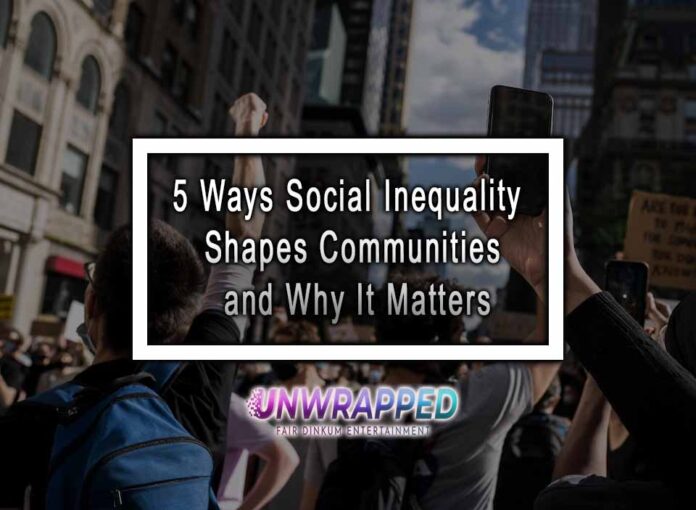The Hidden Power of Social Inequality in Our Communities
Social inequality has long been a prevalent issue in societies worldwide, exerting a profound influence on communities and shaping the lives of individuals within them. From economic disparities to unequal access to resources, the impact of social inequality cannot be underestimated. In this thought-provoking listicle, we explore five significant ways in which social inequality affects communities and why addressing this issue is crucial for a fair and just society.
1. Economic Disparities: Breaking Down the Widening Gap
One of the most visible aspects of social inequality is the economic disparities that exist within communities. The wealth gap, income inequality, and limited opportunities for upward mobility can create a vicious cycle of disadvantage for marginalized groups. This perpetuates disparities in education, healthcare, and living conditions, reinforcing the gap between the haves and have-nots.
2. Unequal Access to Education: The Educational Divide That Defines Communities
Education plays a vital role in shaping the future prospects of individuals and communities. However, social inequality often results in unequal access to quality education. Underfunded schools in disadvantaged areas, lack of resources, and limited opportunities for higher education contribute to a systemic disadvantage for marginalized communities. Breaking down these barriers is essential for fostering equal opportunities and empowering individuals to reach their full potential.
3. Health Disparities: When Inequality Impacts Well-being
Social inequality has far-reaching consequences for the health and well-being of communities. Marginalized groups often face higher rates of chronic diseases, limited access to healthcare services, and inadequate living conditions that impact their overall health outcomes. Addressing these disparities requires not only improving access to healthcare but also tackling the root causes of social inequality that contribute to health inequities.
4. Housing Inequities: A Place to Call Home, A Marker of Inequality
Access to safe, affordable housing is a fundamental human right. However, social inequality often leads to housing inequities, with marginalized communities facing challenges such as homelessness, substandard living conditions, and housing segregation. These disparities perpetuate cycles of poverty and limit opportunities for upward mobility, creating barriers to economic and social well-being.
5. Social and Political Exclusion: When Voices Go Unheard
Social inequality can result in marginalized communities facing exclusion from important social and political processes. Limited representation, lack of access to decision-making platforms, and systemic biases contribute to the silencing of voices and perpetuate power imbalances. Empowering marginalized communities and ensuring their meaningful participation in society are crucial steps toward building inclusive and equitable communities.
Embracing Equity for Stronger Communities
As we have seen, social inequality significantly impacts communities in multiple ways, from economic disparities and unequal access to education and healthcare to housing inequities and social exclusion. By recognizing the far-reaching consequences of social inequality, we can strive to build fairer and more inclusive societies. Addressing these issues requires collective efforts, policy changes, and a commitment to dismantling the barriers that perpetuate social inequality. Let us join hands and work towards creating communities where everyone has equal opportunities to thrive, fostering a brighter and more equitable future for all.
Read more: 10 Ways to Beat Seasonal Affective Disorder (SAD)










